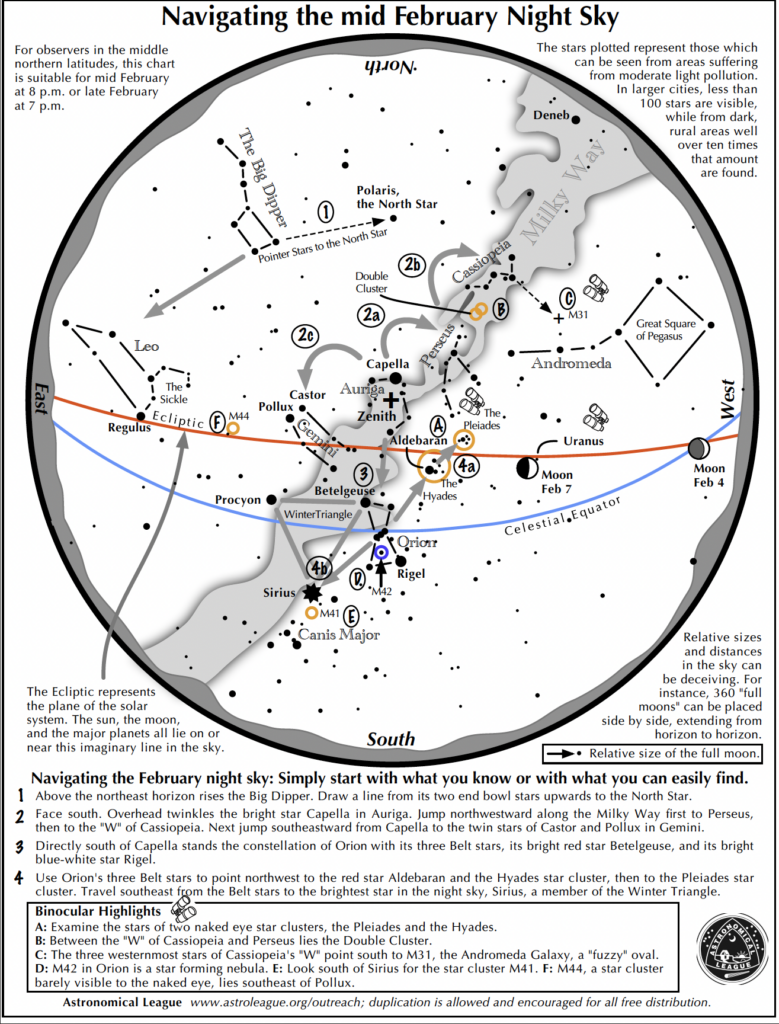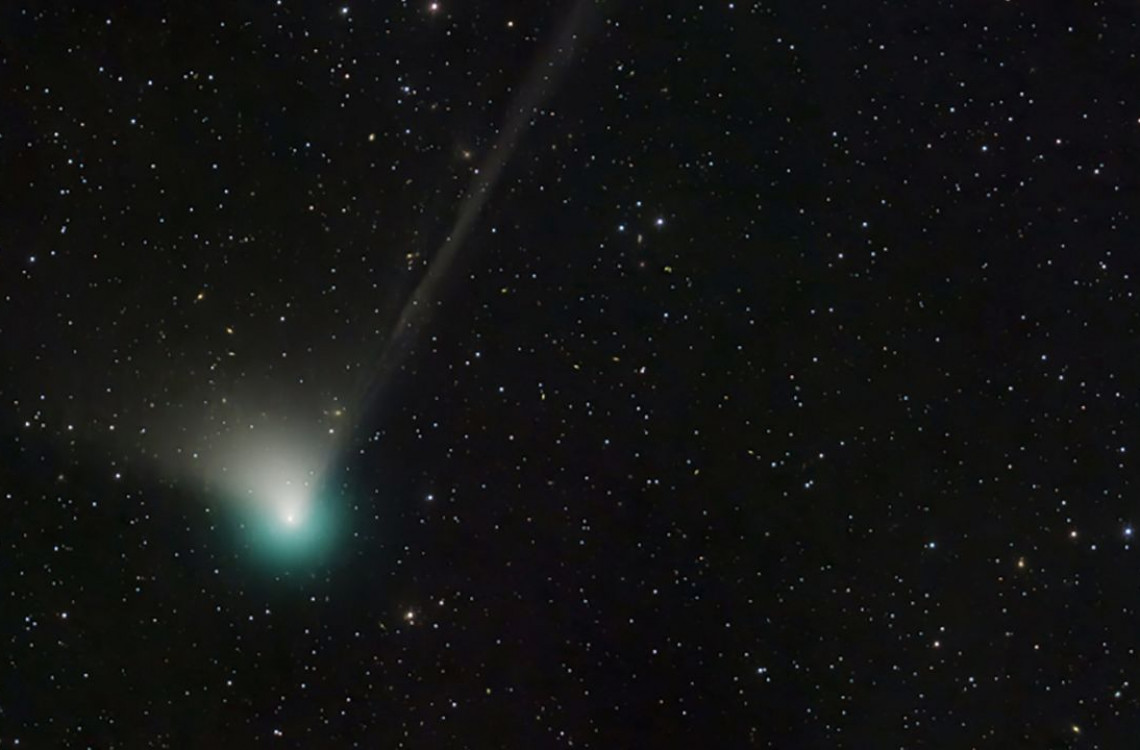The much talked about Comet C/2022 E3 (ZTF) came closest to Earth on February 1st and is still very close for the next few days, though it will become harder to see as the moon gets fuller. Speaking of the Moon, it is full early this month on February 5th and the new moon is on the 20th. Orion and the Pleiades constellations will remain prominent. For the planets, Jupiter and Mars continue to put on a show along with Venus.
Astronomical League’s Navigating the February Night Sky

Jeff’s NOVAC Observing Report
Jeff’s Corner
The Sun
Feb 12 will rise at 7:03 AM, will set at 5:42 PM
The Moon
Feb 5 Full Moon
Feb 13 Last Quarter
Feb 20 New Moon
Feb 27 First Quarter
The Planets
Feb 12
rises transits sets
Mercury 6:02 AM 10:55 AM 3:48 PM
Venus 8:19 AM 2:06 PM 7:54 PM
Mars 11:53 AM 7:24 PM 2:57 AM
Jupiter 9:01 AM 3:10 PM 9:20 PM
Saturn 7:21 AM 12:38 PM 5:55 PM
mag diam notes for Feb 12
---- ----- ----------------
Mercury -0.2 5.6"
Venus -3.9 11.5" WSW, 24*
Mars 0.1 9.5" ESE, 64*
Jupiter -2.2 35.1" SW, 40*
Saturn 0.8 15.3" WSW, 2*
(* degrees elevation at sunset taking into account atmospheric refraction)
(mag = apparent magnitude, diam = apparent equatorial angular diameter)
Jupiter Eclipse Events on Friday and Saturday Nights
Feb 18 6:15 PM Io Eclipse End (S -6 J 255 31)
Feb 25 8:11 PM Io Eclipse End (S -27 J 280 6)
Events
Feb 16 Saturn is in conjunction with the Sun (from Espenak)




